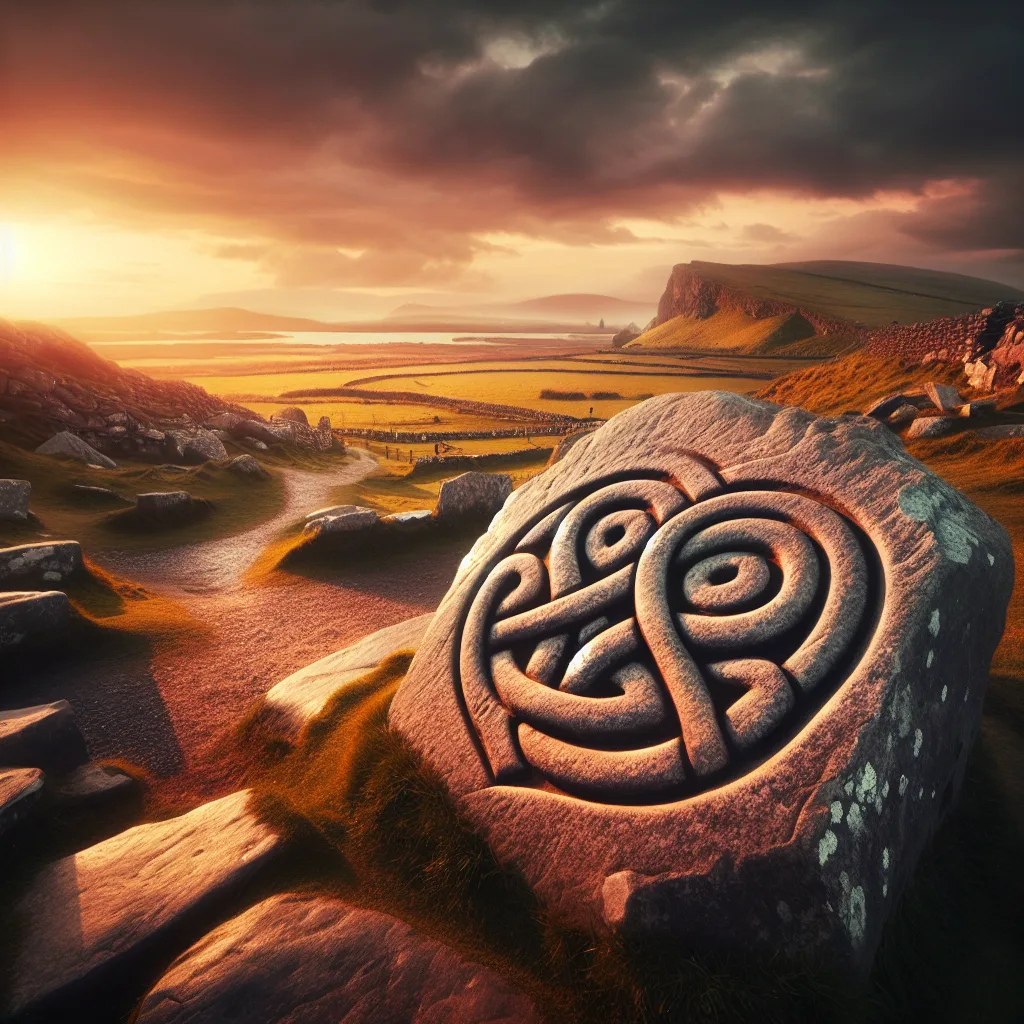The Celtic symbol for love is a profound emblem that represents deep affection and emotional connection in Celtic culture. This symbol, often depicted as two intertwined hearts or a heart entwined with a triquetra, signifies the inseparable bond of love, unity, and an everlasting relationship. The intricate design of this symbol not only reflects the complexity of emotions but also the spiritual depth of the Celtic people’s understanding of love and affection. It is widely used in jewelry designs and tattoos to express one’s deep feelings and commitment to their loved ones.
Unraveling the Mystery: The Celtic Symbol for Love and its Expressions of Affection

The Celtic culture, steeped in history and mysticism, has left behind a rich tapestry of symbols that continue to captivate us with their profound meanings. Among these symbols, the Celtic symbol for love holds a special place due to its beautiful representation of affection and deep emotional connection. Unraveling the mystery behind this symbol not only provides an intriguing journey into the past but also offers insights into how expressions of affection were perceived by our ancestors.
The Celtic symbol for love is often represented by two intertwined hearts or two hands holding a heart above a crown. This emblem is known as the Claddagh, named after a small fishing village in Ireland where it originated. The Claddagh’s design elements each carry significant meaning: the heart stands for love, the hands signify friendship, and the crown represents loyalty. Together, they embody an ideal relationship based on mutual affection, companionship, and fidelity.
However, understanding the Celtic symbol for love goes beyond merely deciphering its visual components. It requires delving deeper into the cultural context from which it emerged. The Celts were renowned for their strong community bonds and close-knit families. Love was not just an emotion; it was an integral part of their social fabric that strengthened ties within communities and fostered unity.
In this light, the Claddagh can be seen as more than just a romantic symbol; it encapsulates a broader concept of love that extends to friendships and familial relationships. The intertwining elements suggest interconnectedness and interdependence – core values in Celtic society where individuals relied heavily on each other for survival.
Moreover, expressions of affection in Celtic culture were not limited to grand gestures or declarations. They were woven subtly into everyday life through shared experiences and mutual support. This aspect is reflected in how the Claddagh is traditionally worn: facing outward when one’s heart is open to love and inward when it’s already taken – a subtle yet powerful expression of one’s emotional state.
The Celtic symbol for love also carries a spiritual dimension. The Celts were deeply spiritual people who believed in the interconnectedness of all life forms and the cyclical nature of existence. Love, to them, was a divine force that transcended physical boundaries and connected souls across time and space. This belief is echoed in the endless knot designs often found in Celtic art, which symbolize eternal love and unity.
In conclusion, the Celtic symbol for love offers a multifaceted exploration of affection as perceived by an ancient culture. It encapsulates not just romantic love but also friendship, loyalty, community bonds, subtle expressions of emotions, and spiritual connections. As we unravel its mystery, we gain a deeper appreciation for the complexity and depth of human affection – reminding us that love is more than just an emotion; it’s an intricate web of relationships that bind us together as social beings.
So next time you see the Claddagh or any other Celtic symbol for love, remember the rich tapestry of meanings it holds. Let it inspire you to express your affection in diverse ways – be it through grand gestures or subtle cues, within romantic relationships or friendships – because at its core, love is about connection and unity in all its beautiful forms.
Conclusion
The Celtic symbol for love is a profound representation of affection and deep emotional connection. It embodies the Celtic culture’s emphasis on the interconnectedness of life and love, often depicted through intricate knots, hearts, or Claddagh symbols. These symbols are not only aestically pleasing but also carry a rich history and deep meaning about love in Celtic tradition. They serve as a reminder of the strength, longevity, and complexity of love.
Secure Your Dream Irish Experience Before It’s Gone!
Planning a trip to Ireland? Don’t let sold-out tours or packed attractions spoil your journey. Iconic experiences like visiting the Cliffs of Moher, exploring the Rock of Cashel, or enjoying a guided walk through Ireland’s ancient past often sell out quickly—especially during peak travel seasons.

Booking in advance guarantees your place and ensures you can fully immerse yourself in the rich culture and breathtaking scenery without stress or disappointment. You’ll also free up time to explore Ireland’s hidden gems and savour those authentic moments that make your trip truly special.
Make the most of your journey—start planning today and secure those must-do experiences before they’re gone!

